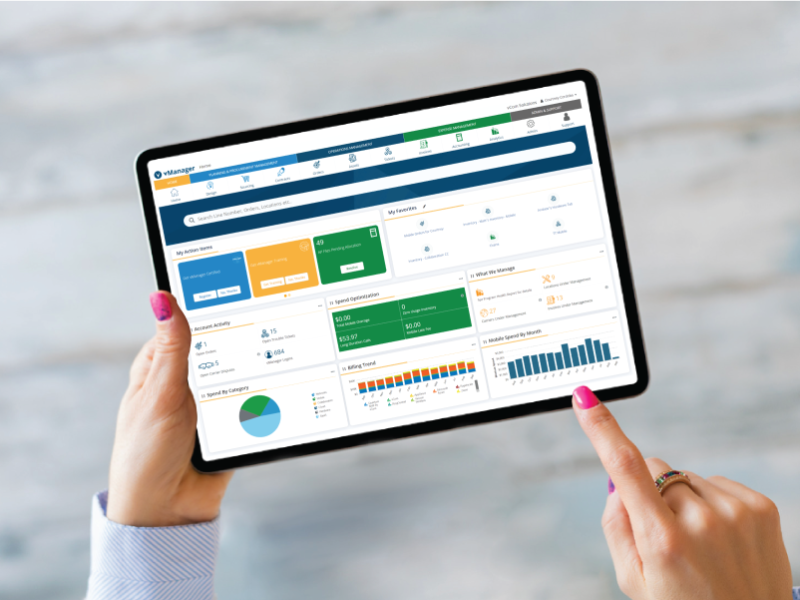The technology lifecycle is simply the various stages over the useful life of any technology. Everything has a lifecycle — a span of time in which it has value. Eventually, things age or break down. Specific to IT its important to understand when an asset exceeds its lifecycle because it can cause more issues than it solves. The relatively short lifecycle of technology due to constant reinvention and improvement means keeping an eye on technology obsolescence should be a standard practice.
What Is Technology Lifecycle Management?
In essence, a technology lifecycle management strategy is having a plan in place to deal with all aspects of your technology across its useful life, including deployment, operation, maintenance, and expiration. While this can vary from organization to organization, there are some basic aspects that are universal within a TLM solution:
- A complete inventory of every component within your IT environment, including operating systems, hardware, software, middleware, and other applications. Information on how these components interrelate with each other is often included.
- A well-defined process and an individual or group assigned to each item on your inventory list.
- A schedule that delineates when updates will occur, as well as reviews based on what is most critical.
- Plotted expiration dates on a calendar system that includes implementation time and the appropriate vendors or internal process with dates to indicate when various components will no longer be supported.
In a sound technology lifecycle management system, it’s essential to schedule and plan for every aspect of the technological landscape.
Risks of Not Managing Your Technology Lifecycle
The first risk comes in the form of lost business opportunities. You can potentially lose business when you have antiquated technology and no longer have the flexibility to move with the market and keep up sufficiently. If large parts of your technology processes cannot adapt to your customers’ growing needs, you will miss opportunities.
Akin to lost opportunities is the failure of operating processes. If you fail, it can affect your reputation with your client base and change your business’s focus from customer care to rectifying the failure. Failure is inevitable, but it can also be predictable, and if you take the needed time to understand and plan for it, you can deal with issues without missing a beat.
Failures can also lead to unplanned costs and expensive ones that inflate when you’re in a crisis or emergent situation. An excellent proactive plan will alleviate these failures, saving time and money in the long run. In addition to missed opportunities and damage to your reputation, outages can cause you to alienate your current customer base. If you cannot recover expediently, they’ll go elsewhere with their business.
Why Technology Lifecycle Management Is Important
The vast diversity of the various technology solutions — such as in-house, contained systems running exclusively on the cloud, or a hybrid system comprising both types — needs to be considered. You need to address ever-increasing security concerns, along with the myriad of mobile devices that may access your network and data via employees’ personal devices. These various aspects create a very complex technological environment that can be difficult to manage effectively. A thorough lifecycle management plan will help you identify risk areas early on, allow you time to find cost-effective solutions, and minimize any operational interruptions.
Typically chief information officers (CIOs) are focused on evaluating technology from the vantage point of increasing opportunities and growth and generating business strategies to capitalize on new or improved technology. Rarely are they looking at which server updates are necessary or which assets are becoming obsolete like laptops and software. The impetus to ensure a secure network environment, buffer against cyber attacks, and find better ways to store data, including insights and analysis, also takes a great deal of attention. The unfortunate result is that operating and maintaining the current network and technological infrastructure has become a lower priority.
Six Phases of a Technology Lifecycle Management Strategy
Each technology lifecycle management strategy consists of six basic phases, including:
- Assess needs and identify solutions. The first step is crucial and involves determining current and future needs, allowing for growth and accommodating all phases of the lifecycle. Any stakeholders, either business or technical, should generate a plan that includes:
- Acquisition.
- Financing that matches budget restrictions.
- Support for the current and incoming technology.
- Implementation.
- Guidelines to track assets accurately.
- Plan to retire technological assets.
- Support upcoming growth and future business objectives.
- Examine whether outsourcing is a viable option or to keep it in-house.
- Metrics to determine if the strategy was effective.
- Acquisition. The next phase is the acquisition phase, in which you procure the various technological components delineated in the assessment phase. This phase also includes dealing with the logistics and financing of the acquisitions.
- Implementation and management. While this phase will be different for each organization, the idea here is to incorporate the newly acquired components into your current environment. Tracking is also part of this phase, including the purpose for its use and which individual or entity is responsible for it. With the added complexity of cloud solutions and remote workers, this stage gets more challenging, but its importance does not change.
- Support. A vital component of a quality technology lifecycle management strategy is a comprehensive support system to keep the entire system running at peak optimization. Support includes proactive incident tracking, phone support, managing configurations, determining when to extend warranties, and evaluating system performance utilizing defined metrics.
- Refresh. This phase sets aside funds for any future requirements needed and determines if current components are already outdated or need upgrading or replacement. You should do a refresh every few years to make sure everything is optimized and up to date.
- Disposal. Having a plan for disposing of outdated and obsolete components will make it easier to remove these components when the time comes. There will most likely be an e-recycling firm you contract with here or some other mechanism to effectively dispose of your outdated gear.
A well-thought-out technology lifestyle management strategy will keep your organization at the forefront of your industry, allowing you to operate at peak efficiency. Also, an effective strategy will minimize downtime and interruptions while mitigating unexpected costs.




